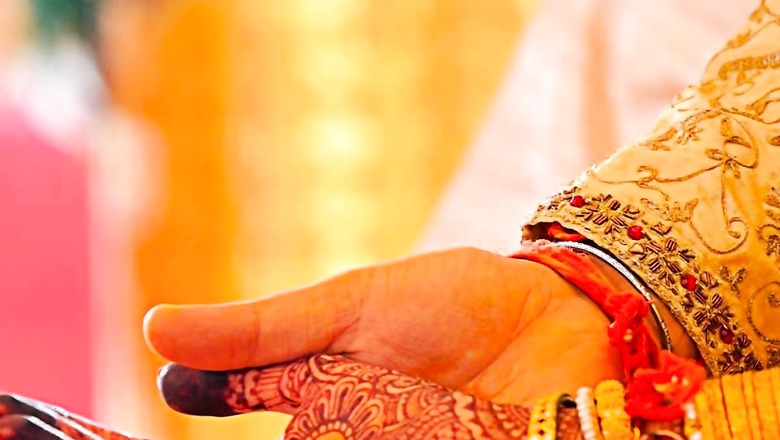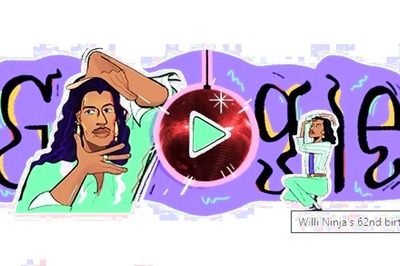
views
It is war that gives birth to weapons. How sharp or clandestine the weapons depend on who and what we are fighting against. So when about 200 NGOs combatting child marriage in the villages or districts of India chalk out a strategy that fights the ritual but befriends the people, their war plan has to be humane, intricate, smart, and traditional. They need to make indigenous plans, rope in locals, echo the sentiments of the community, and yet weave in the right message without hurting the majority’s sentiments or sounding like outsiders.
They can’t be too loud, lest it sounds offensive, but they can’t whisper, lest the message gets lost. This fine balance is the challenge, and these civil society organisations have admirably been able to strike it with much aplomb.
Yes, this Akshaya Tritiya, an otherwise auspicious day which often becomes a curse for children who are pushed into marriages, these NGOs fought with fire to save vulnerable children from getting married. These NGOs, which are all coalition partners of the Child Marriage Free India campaign and have been working at the grassroots in over 400 districts across the country, did manage to protect children from getting married this year on Akshaya Tritiya. The day was auspicious indeed!
The NGOs are working in tandem with village panchayats (village heads) and district administrations in this fight. In fact, in a recent order, the Rajasthan High Court also affixed the responsibility of child marriages on the village heads in the state. The high court was hearing a petition filed by the Just Rights For Children Alliance, ahead of Akshaya Tritiya.
It is an interesting and apt way to fight the crime that child marriage is. The laws in the country on child marriage are clear. The Prohibition of Child Marriage Act, 2006 clearly states that whoever performs, conducts, directs or abets any child marriage shall be punishable with rigorous imprisonment, which may extend to two years, and shall be liable to a fine, which may extend to Rs 1 lakh.
Despite the law being so clear, almost one in every four children in India is still being pushed into early and illegal marriage. This alarming figure is a sore point for a nation marking its global footprint in almost all fields, from science and technology to diplomatic relations and international trade. Both the Central and state governments have been showing determination and commitment to uproot this crime from society, and while the impact is immense and far-reaching, the question remains if it is reaching deep enough to hit child marriage right where it rests in our society.
For example, as the vigil has grown, so has the villagers’ tactics to commit this crime right under the scanner. An NGO partner of the Child Marriage Free India campaign working in Rajasthan recently said that now that the villagers are aware of the crackdown, child marriage often coincides with a death in the family. “Since there are already relatives in the house and no one suspects anything, villagers often clandestinely marry off their children right after the burial rituals have been completed. This way they easily ward off any suspicion from anyone,” the NGO working in the grassroots of Rajasthan said.
Similarly, since the drive to prevent child marriages on the auspicious day of Akshaya Tritiya is often very intense, villagers have been using ‘Peepal Puniya’ as the auspicious time to commit this crime. ‘Peepal Puniya’ is the 14-day period after Akshaya Tritiya which is also considered quite auspicious and perfect for marriages.
So, roping in the village heads who are in the know of things, and working in tandem with district administrations will help the message reach every households. Reaching the last mile and making the message heard by the weakest links in society is possible only when the panchayats take up the charge of bringing about a social change as challenging as ending child marriage. Panchayats bringing in such a monumental change is neither overly ambitious nor impractical.
History is proof enough that panchayats in our villages have, time and again, achieved what laws and policies alone could have taken much longer to accomplish.
In 2020, the villagers of Simrahi Tola of Sakaldeepa panchayat in Palamau district of Jharkhand were facing a difficult time crossing over a turbulent rivulet. Even the nearest medical facility, which was 12 km away, became difficult to access due to the river. Taking a cue from Prime Minister Narendra Modi’s ‘Atmanirbhar Bharat’, the villagers did not wait any longer for the sanctions to come through and made a 25-foot bamboo strip bridge which immediately became the lifeline of the villagers there.
Let’s look at another instance to gauge the power of panchayats in our country. As part of the Centre’s Swachh Bharat Abhiyan, the Goa chief minister in 2019 sought the active support of all panchayat bodies to make the state open defecation-free (ODF) in a month. The result: the state announced that all village panchayat areas are now open defecation-free (ODF). The success of the Pulse Polio Immunisation (PPI) in India stands on the pillars of our panchayats, village heads, Anganwadi and Asha workers.
So, the fact that the entire onus of making India child marriage-free by 2030 is being equally shared by the village panchayats is an extremely promising and strategic move. Child marriage, as a socially accepted practice, has been embedded in our country’s fabric for centuries. While there have been laws, initiatives, and actions to combat this social crime, these measures haven’t been enough. The fight against child marriage can only be won if we target this dangerous societal mindset. The collective synergy of these NGOs, along with the will and work of village panchayats, district administrations, and the communities themselves, is how this mindset can change.
For the mind to be free, fair, and just, the fight must be inclusive, intense, and tailor-made.
Ravi Kant, is Convenor, Child Marriage Free India. Views expressed in the above piece are personal and solely those of the author. They do not necessarily reflect News18’s views.


















Comments
0 comment